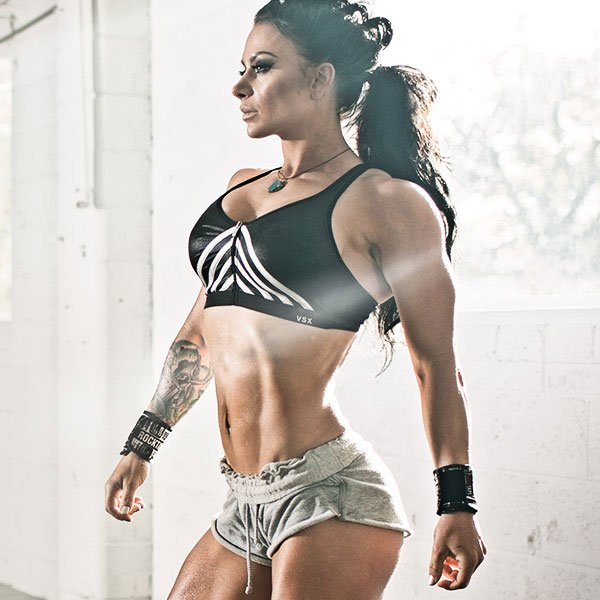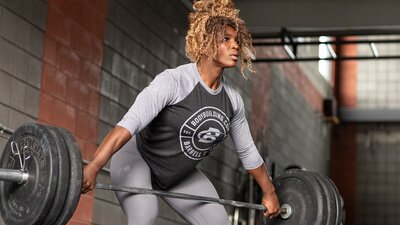What is Olympic Lifting | Learn the Olympic Lifts | Olympic Lift Variations | Olympic Lifting and Bodybuilding | How to Master the Olympic Lifts | How to Prep for a Weightlifting Meet
A common misconception about Olympic weightlifting is that it's just made up of two lifts, the snatch and the clean and jerk. Anyone who takes this sport seriously can attest that plenty of their most productive training time is actually spent doing numerous broken-down and re-arranged parts of those two main lifts.
Considering getting serious about Oly lifting? Richard LaFountain's guide to the Olympic lifts makes the case convincingly about how it can help you add muscle and athleticism, and even function as cardio (seriously). After you make that decision, here are the next steps:
- Spend lots of time practicing the snatch and clean and jerk with an empty or very light bar.
- Get strong—and then stronger—at other "foundation lifts" of the Olympic lifts.
Start moving some weight on these six moves, and you'll see serious progress on the full lifts in no time.
Clean Foundation Exercise 1: Front Squat (Front-Rack Position)
There are many ways to front squat when the goal is overall strength and gains. But if you're building up to heavy clean and jerks, there's only one version you need: with the bar in your hands and your elbows pointed forward, in what is known as the "front rack" position. If you can't even hold the bar in that position without wanting to scream in agony, it's time to start working on your mobility.
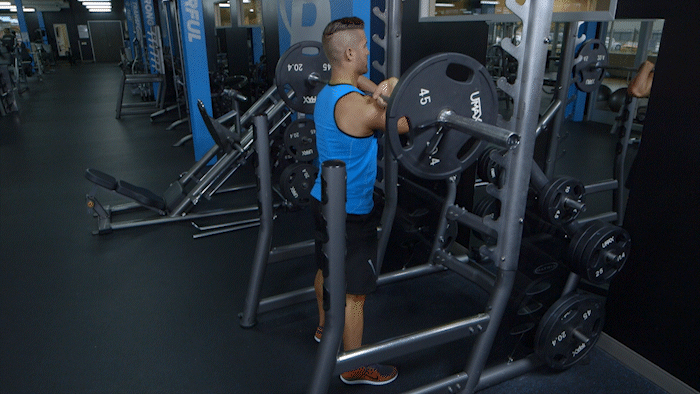
To do a clean, your upper back, lower back, shoulders, and wrists have to be strong. Fortunately for you, the answer is the move itself: Grab an empty bar and practice holding the bar in the front rack and squatting down—way down.
If you're going to do respectable Olympic lifts, ass-to-grass needs to become your new normal. Work on your ankle mobility and consider investing in some high-heeled squat shoes to make your front squats deeper and more comfortable.
One Big Key: Front squats respond well to classic strength-building schemes like 5x5 as an accessory lift to the Olympic lifts. But don't overlook the version with an empty bar! Hold the bottom position for at least 30-60 seconds, until you feel at home there. Then keep doing it regularly to keep owning that position.
Heavy-ass front squats are stronger and safer with a solid nylon or leather lifting belt.
Clean Foundation Exercise 2: Clean Pull
Sorry bro, your one-rep max on the deadlift doesn't matter a whole lot in the world of Olympic lifting. Instead, your "big pull" to get strong on from the ground is a clean pull, an explosive lift where you'll focus on pulling the bar as high as you can. This is a crucial movement to master, because it's what you'll do before you fall under the bar in a real clean.
Unlike a deadlift, you'll keep your arms just slightly bent and the bar close to your body. The point is not to use your arms to yank the bar up, but to use your ankles, knees, and hips—what's known as "triple extension"—to drive the bar upward. You'll also build explosive power and serious strength in two other powerhouse muscles, the lats and hamstrings.
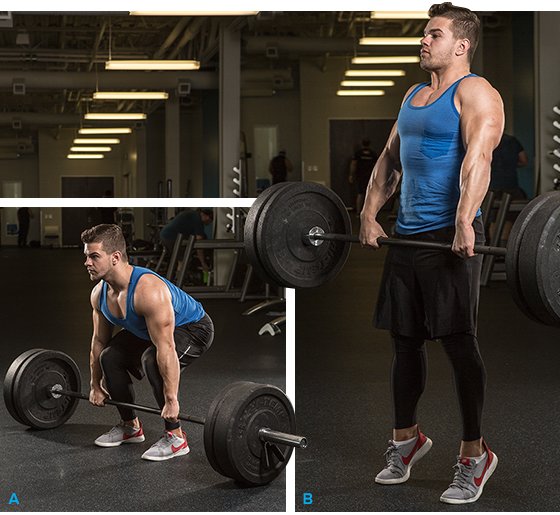
One Big Key: As you pull, don't let the bar drift forward. To be good at the clean, you have to learn to control the bar and make it do what you want. Don't let the bar control the movement. Your form should stay the same, no matter how heavy you load the bar.
Jerk Foundation Exercise 1: Push-Press
In addition to being one of the best shoulder-building movements you can do, the push-press helps practice one of the trickiest parts of a clean and jerk: Getting comfortable having heavy weight over your head.
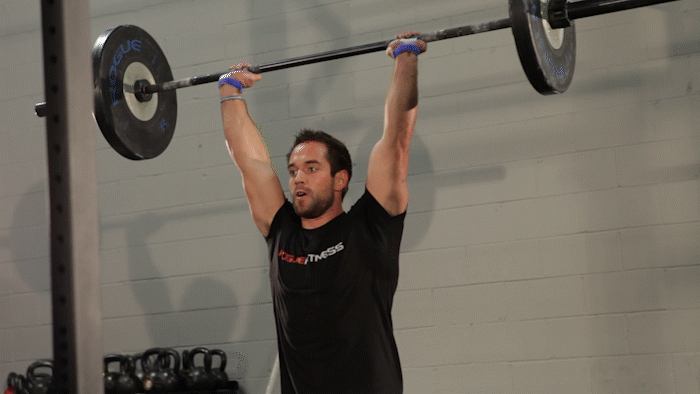
It will feel scary at first, but by using your legs through the toughest part of the press, you'll build strong, stable shoulders and an iron core that, together, are more than capable of putting up big numbers. It's a game-changer for many lifters, and an easy inclusion on my list of "5 Exercises Every Strong-Ass Woman Needs."
One Big Key: The push-press is not a standing incline bench press. I see a lot of people doing this lift with a lot of chest action. The bar goes more forward than out and there's a lot of scary back-arching going on.
Jerk Foundation Exercise 2: Push-Jerk
A push-jerk is the next step up in explosiveness from the push-press. You re-bend your knees after you dip and drive to "catch" the bar over your head. This movement is a little more complicated and thus takes a bit more athleticism and coordination.
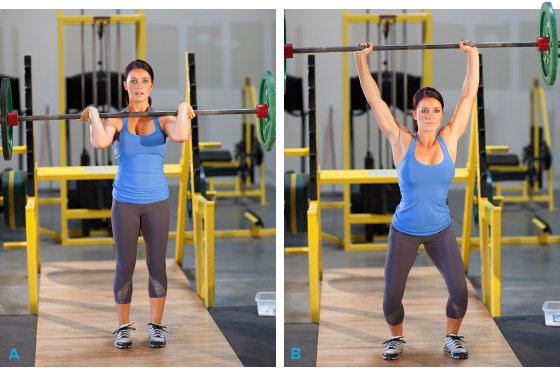
It's not easy for every lifter off the street to master, as IFBB pro Lawrence Ballenger learned when he tackled the lift in the first episode of the Brute Strength Showdown. But once you get comfortable, you should be able to push-jerk more than you push-press.
One Big Key: Just like in the push-press, your head should poke through your arms at the top. If someone was standing to the side watching you, they would be able to see at least a little bit of your ears.
Getting serious about putting heavy-ass weight overhead? Wrist wraps will make it feel more stable up there.
Snatch Foundation Exercise 1: Overhead Squat
Meet one of the most humbling exercises ever invented. If you have any weak points in your shoulders, back, or hips, the overhead squat will let you know instantly.
This isn't a reason to skip it. It's a reason to do it! The bottom portion mimics perfectly the landing position of the full barbell snatch, and it's also great for working overall balance, stability, and shoulder mobility.
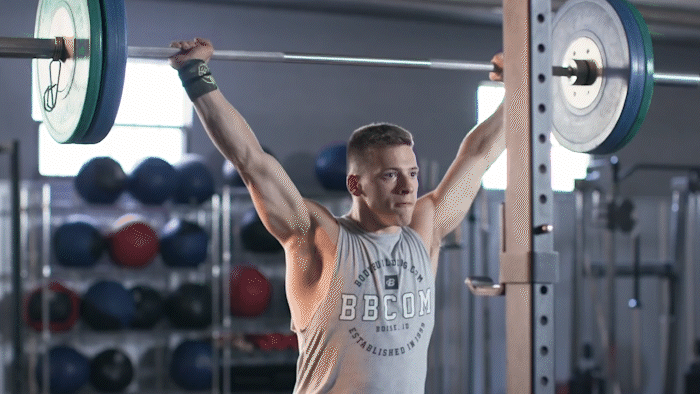
One Big Key: Overhead squats can be a great warm-up with an empty bar in addition to being a heavy assistance lift. And like deep front squats, they're almost always better with high-heeled lifting shoes than without.
Snatch Foundation Exercise 2: Snatch Balance (Drop Snatch)
The snatch balance combines elements of all the other lifts described here. Even with light weight, this next-step-up from the overhead squat can be a tough nut to crack.
You'll start with the bar racked across your shoulders like you would for a back squat. Place your hands out wide on the bar, like they would be for a snatch. Dip like you would for a push-press, and then drive upward. As the weight unloads from your shoulders, drop into the bottom of an overhead squat position.
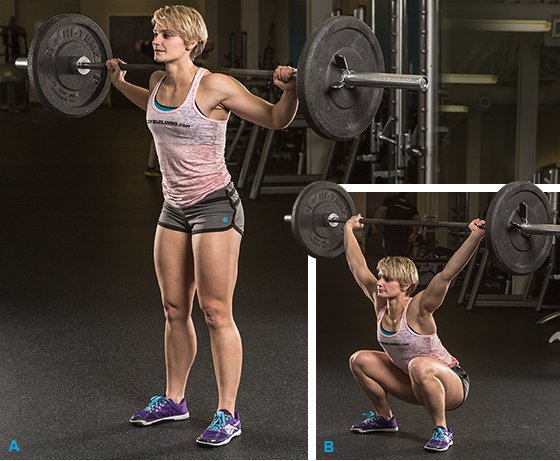
One Big Key: This lift feels terrifying the first time you do it with significant weight, so take your time! Practice it with a dowel, broomstick, or an empty bar for weeks or months before adding any weight to the bar.
